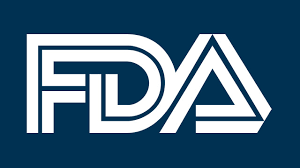According to McKinsey Corp, “Up to half the cost of many supply chains lurks ignored and unmanaged in outbound logistics and behind the closed doors of distribution centers.” A European study put logistics at 12 percent of the total cost in manufacturing and more than 20 percent in the retail sector, but McKinsey says, “Pharma logistics represent about 2 percent of sales, or 7 to 8 percent of the cost of goods sold,” though it goes on to say that this is less than in other industries and points out that the outbound supply chain is often outsourced.
As McKinsey says, it is probably for these reasons that optimizing outbound logistics has not been a strategic priority for American pharma companies. DSCSA, however, with its emphasis on the absolute security of the pharmaceutical supply chain from first research to the point of dispensing to the final consumer, is likely to change that.
Inefficient or unreliable warehouse operations and distribution always offered a threat that amounted to more than just money. Delivery delays and wrongly routed shipments can cause lasting reputational damage and, where the customer is a large retailer, the cost can be heavy and lasting. What DSCSA adds to that mix is the threat of FDA penalties.
According to McKinsey, 95 percent of logistics costs are bound up in warehouse operations and transportation and the consultancy sees the possibility of significant savings in those areas.
Optimizing the warehouse, though, is not as straightforward as optimizing a production line. You can’t set out a program for improvement until you’ve benchmarked current performance. If this warehouse is owned by the pharmaceuticals company and stores nothing for anyone else, that may not be so difficult, but that is rarely the case. Most warehousing is outsourced and the same warehouse will be handling goods for a variety of clients with a large number of SKUs. Some goods turn over every day and others perhaps once a year. No one has yet defined the perfect warehousing model.
Security is somewhat easier to define, at least in principle: the objective is to lose nothing, ever, and the challenge of best practice is to achieve optimum cost reduction while keeping the product totally secure. We’ll look at the major causes of inventory shortfall, but before examining the ones that no one likes to think about, we’ll focus on two words: human error. People get things wrong, which is why in just a moment were going to put stress on training.
1. Prevent Loss through Damaged Product
The warehouse that never damages product has not yet been built. There are, however, steps you can take to reduce it to an absolute minimum. These can be serious numbers; if a warehouse handles $10 million of stock in a year, cutting wastage by one percent puts $100,000 straight onto the bottom line.
2. Perform Regular Training
Training is always important but for warehouse staff it can have extra advantages. The fact is that people working in warehouses do not always feel valued and knowing that their employer is investing in their future can change that. The fact that well-trained people cause less wastage through damage is a welcome side-effect. Part of training is establishing a correct location for every item in the warehouse and making sure that everyone knows what it is. You’ve got an inventory system; is everyone trained in how to use it?
3. Reduce handling
Every time someone touches a product, there is the risk – however small – of damage. Good layout and the right equipment can reduce human handling to a minimum. Loss through damage tends to fall in parallel.
4. Purchase Correct equipment
Material handling is a specialist field and any company that does not have an expert on the staff is well advised to seek outside help. Selecting the best equipment for the way your operation is set up and the products it handles, and then making sure that it’s correctly installed to suit the physical circumstances, can pay large dividends.
5. Prevent Loss through Incorrect Records
The first question anyone running a warehouse should ask themselves is: how do you know that you lost inventory? The most reliable way is to install a warehouse management system that integrates with your ERP in real time. We’ve already mentioned human error and human error is part of a much larger problem which is that the correct data does not get entered in the first place. If you had to focus on only one area of your logistics chain, this would be it. Errors in data entry can be calamitous. Eventually, the introduction of DSCSA should reduce this problem because information will be passed electronically, but that deadline is still some distance away.
6. Prevent Theft
Most people are honest. Society couldn’t function otherwise. But theft happens and, let’s be frank, when you’re handling drugs, even of the prescription kind, there are people who want what you’ve got. Of course you have CCTV, alarm systems, perhaps uniformed guards – and yet some inventory continues to disappear. That’s because all those precautions you put in place are to prevent people from breaking in – but some theft is by people inside the company. It isn’t nice, no one likes to think about it but it’s there. How do you deal with it? Well, people who work for you know how your system works and they will find any gaps in security but:
- Have internal video and make sure it’s regularly monitored so that equipment failures are identified and fixed
- Install the most robust checking system you can to identify questionable transactions
- Let staff know that internal theft is not tolerated and anyone caught it always prosecuted.
On the other hand, you don’t want to instill an atmosphere of fear and distrust. The most efficient operations are always those where the people involved are motivated and motivation comes from believing that you are a valued and respected member of staff.
Free DSCSA Evaluation
Contact TrackTraceRx today to receive a free evaluation of your DSCSA current policy and procedures. This free consultation will allow you to have a piece of mind that you are following the correct procedures in order to meet ALL DSCSA requirements. TrackTraceRx will also provide you with a FREE Standard Operating Procedure (SOP) template which is required by the DSCSA during a FDA inspection.




